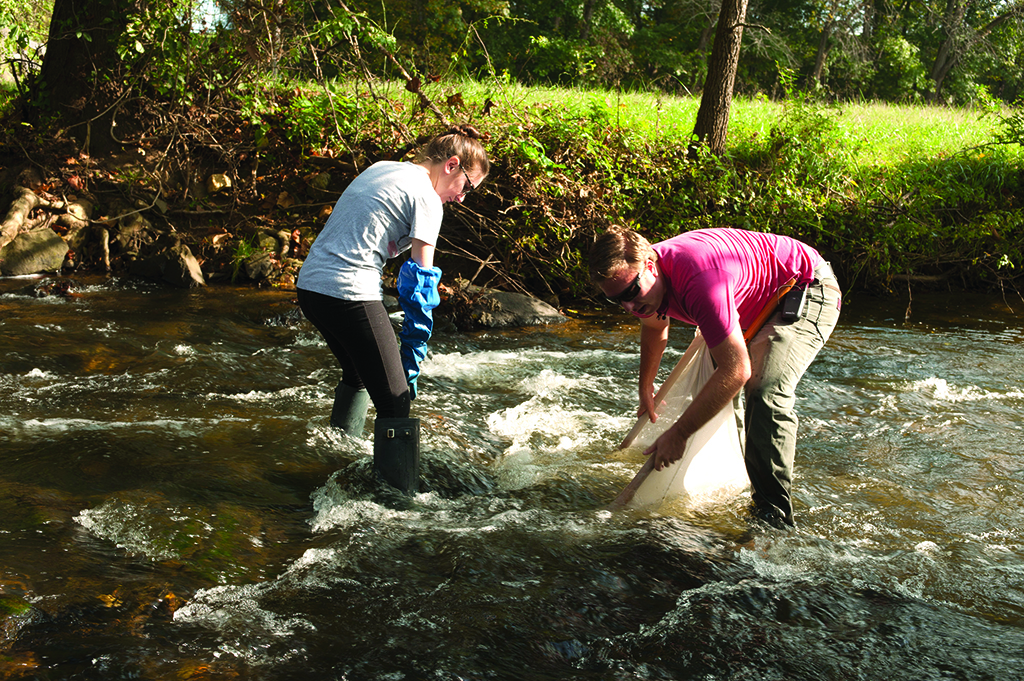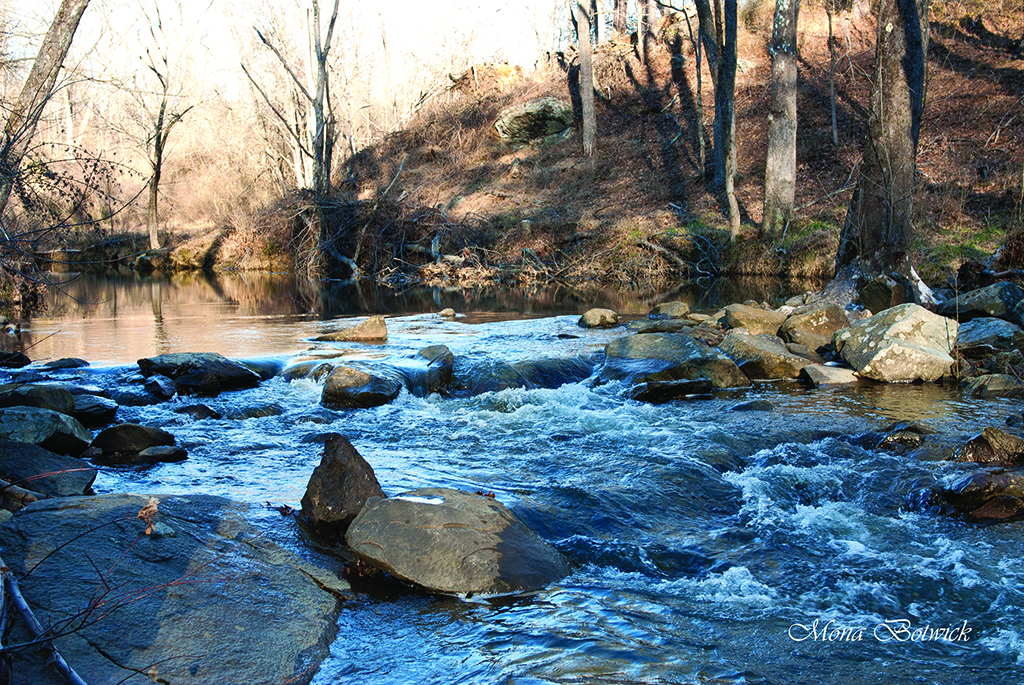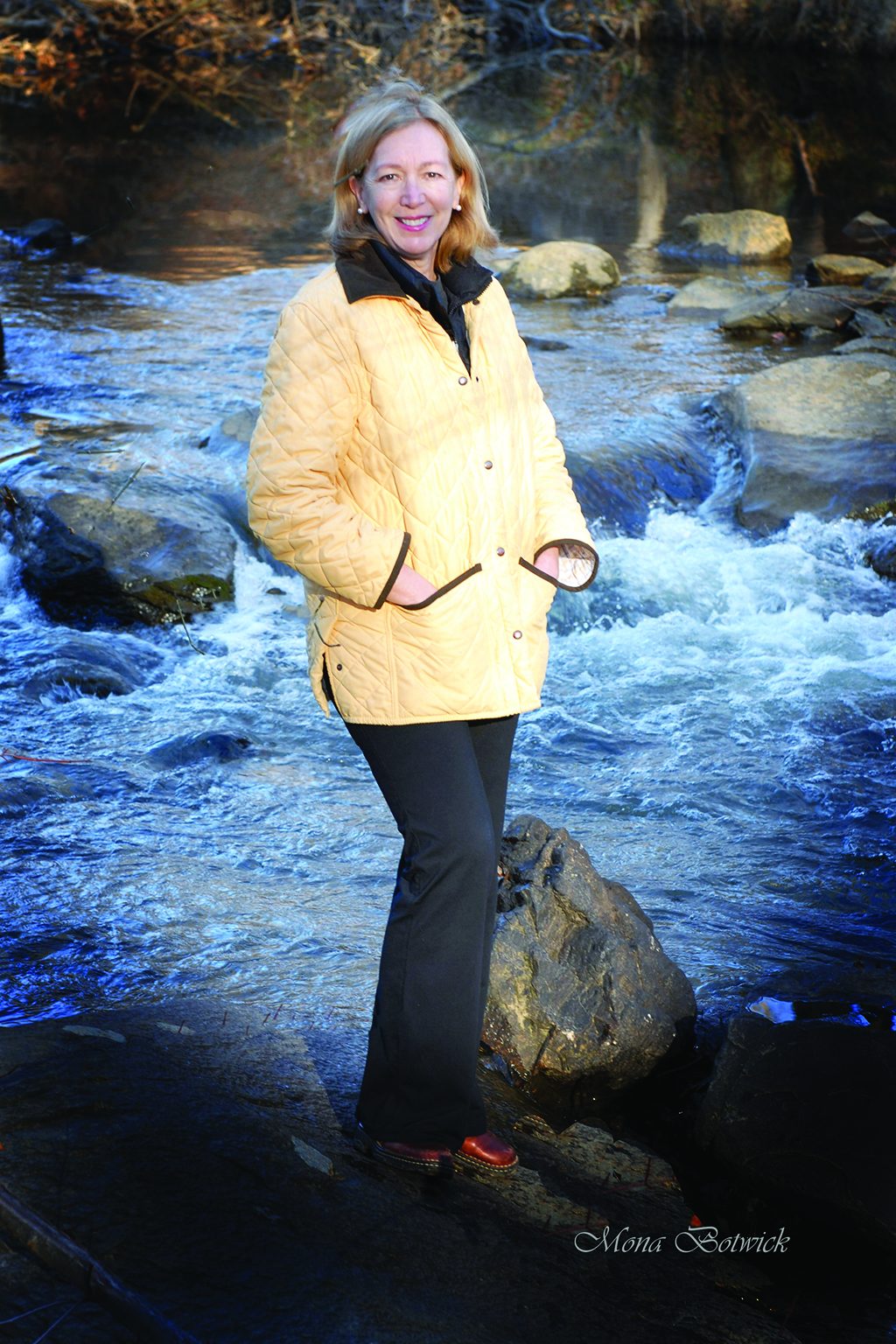The 50 Year Fight to Preserve Goose Creek Continues

Goose Creek Association Co-Chair Shares the Journey
By Kaitlin Hill
Established in 1970, the Goose Creek Association in Middleburg works tirelessly for the environmental and historic protection and preservation of the Goose Creek Watershed and beyond. In its 50th year, with a battalion of eco-focused members and a multi-pronged advocacy approach, the non-profit shows no signs of slowing down.
Goose Creek is a 54-mile long state scenic river with a 358-square mile watershed and is an important part of the Potomac and Chesapeake watersheds. Not only significant for providing water to Fauquier and Loudoun counties and the Town of Leesburg, it’s also historically significant as a point of interest to Native Americans, George Washington, and John Marshall, as well as being the site of notable Civil War battles at Goose Creek Bridge.
“The Goose Creek Association is a volunteer-driven, boots-on-the-ground organization [whose] main focus is our watershed,” Florence “Lori” Keenan McGuinness, co-chair of the Goose Creek Association, says. “It’s primarily focused on the environment, pollution in particular. But we try to raise people’s awareness about how special this area is historically, and we get involved in activism that puts into motion our concerns.”

Goose Creek, photographed by Mona Botwick.
What started as a group of concerned neighbors has blossomed into a multi-hundred-member non-profit spanning Fauquier and Loudoun counties. The association takes a multi-angled approach to environmental preservation including mindful planning, educational programs, volunteer activities, and close working partnerships with like-minded organizations.
McGuinness says involvement in planned expansion is an important tool in fighting irreversible environmental damage to Goose Creek and, more broadly, the relentless march of climate change.
“What we’re trying to do is delay the inexorable outward growth of a population into our counties by bringing attention to the environmental concerns that come with such growth,” she says. “We aren’t anti-development, but we try to shape development according to what the planners in their wisdom have already articulated. The plans, in both Loudoun and Fauquier, appreciate the rural and agricultural nature of those counties. We’re trying to preserve that special character that makes it so beautiful out here.”
More than preserving the bucolic beauty of the area, environmentally minded planning is also important to preserving the health of the Goose Creek Watershed.

Volunteers stream monitoring, courtesy of the Goose Creek Association.
“Because of residential development, there’s a lot of run-off from hardtop and fertilizers used on lawns,” McGuinness says. “As you get down south, there is a certain amount of impairment with agricultural fertilizer, pesticides, as well as E-coli from the cattle. There are two types — human-created impairments and agricultural impairments to Goose Creek — that we try to make people aware of so that we can mitigate those impacts.”
The association’s educational efforts take the form of documentaries, lectures, and volunteer work.
“For many years, we put on an annual educational forum, for instance, forums on native trees, riparian buffers, and so on,” says McGuinness. “But then we switched and started doing documentaries, and now there is a wealth of wonderful documentaries out there. We’ve done one on alternative energy, plastics in the water, and just last year we did one on [the development of] an organic farm in California over a 10-year span.”
To celebrate its 50th anniversary, the GCA put together the “Goose Creek Documentary.”
“It was something we thought we could take on the road and show to people who are not aware of the river and its tributaries,” she says. “We want to enlighten people about why we consider it such a special area and why we’re trying to protect it.”

Florence “Lori” Keenan McGuinness, photographed by Mona Botwick.
Lectures are an important part of getting the message out too, and they can prove to be as interesting as they are educational. McGuinness reflects on a memorable talk with Dr. Ellen Stofan, director of the National Air and Space Museum.
“She spoke to us about what we can learn about Earth from space,” she says. “It was extremely informative and somewhat alarming. But these movies and these lectures we put on are done in a very articulate and well-constructed way that can reach our audiences really well. They’re entertaining and educational. And, it’s something to do in the dead of winter.”
In warmer months, the GCA creates opportunities for volunteers of all ages to get outside and protect Goose Creek firsthand.
“We have a notable and instrumental member named Marcia Woolman who started many of our programs,” McGuinness says. “She started the stream monitoring program and the riparian buffer program that we coined ‘The Goose Creek Challenge,’ and she encouraged us to support the kids going to environmental camps.”
For the Goose Creek Challenge, the association relied on the efforts of student volunteers to help plant over 20,000 feet along the stream bank with 12,000 native trees and shrubs that will protect against erosion. Hard work, certainly, but McGuinness notes that the stewardship is great fun too.
“We do this canoe cleanup,” she says. “I did one a year ago in May, and it was such a beautiful day. The bluebells were blooming, and there wasn’t a cloud in the sky. I just thought, ‘What a pleasure this is.’”
While volunteers help with the legwork, strategic partnerships with groups like the Land Trust of Virginia, the Piedmont Environmental Counsel, and the Mosby Heritage Area Association also benefit the Goose Creek Association.
“I think we’re all very compatible with each other, even though we might have different focuses,” McGuinness says. “We all have different areas of expertise, and, frankly, it helps to spread the responsibility around.”
With a clear mission, educational outreach, and productive partnerships, the Goose Creek Association has spent the last 50 years making good on that sense of responsibility to the environment and the future generations who will inhabit it.
“We’re leaving it better than we found it, or at least we’re trying to,” McGuinness says. “We’re trying to keep our eye on the ball: We all want a good place for the next generation and future generations to live. We don’t want to spoil it.” ML
This article was first published in the August 2020 issue of Middleburg Life.


